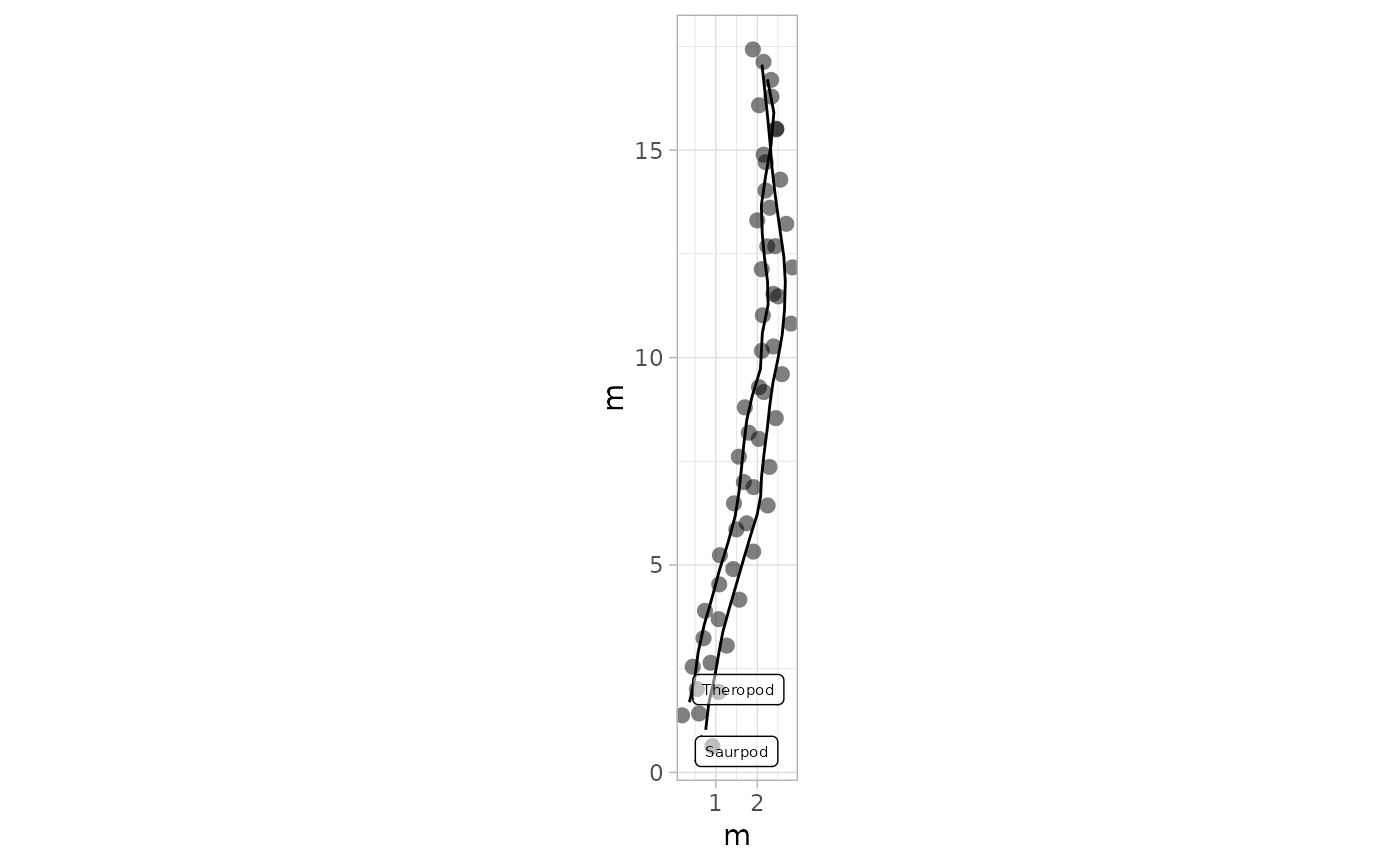plot_track() visualizes track and footprint data in various ways, allowing for the plotting of trajectories, footprints, or both combined, with customizable aesthetics.
Usage
plot_track(
data,
plot = "FootprintsTracks",
colours = NULL,
cex.f = NULL,
shape.f = NULL,
alpha.f = NULL,
cex.t = NULL,
alpha.t = NULL,
plot.labels = NULL,
labels = NULL,
box.p = NULL,
cex.l = NULL,
alpha.l = NULL
)Arguments
- data
A
trackR object, which is a list consisting of two elements:Trajectories: A list of interpolated trajectories, where each trajectory is a series of midpoints between consecutive footprints.Footprints: A list of data frames containing footprint coordinates, metadata (e.g., image reference, ID), and a marker indicating whether the footprint is actual or inferred.
- plot
Type of plot to generate. Options are
"FootprintsTracks"(default),"Tracks", or"Footprints". Determines what elements are included in the plot.- colours
A vector of colors to be used for different tracks. If
NULL, defaults to black. The length of this vector should match the number of tracks in the data.- cex.f
The size of the footprint points. Default is
2.5.- shape.f
A vector of shapes to be used for footprints in different tracks. If
NULL, defaults to19(solid circle). The length of this vector should match the number of tracks in the data.- alpha.f
The transparency of the footprint points. Default is
0.5.- cex.t
The size of the track lines. Default is
0.5.- alpha.t
The transparency of the track lines. Default is
1.- plot.labels
Logical indicating whether to add labels to each track. Default is
FALSE.- labels
A vector of labels for each track. If
NULL, labels are automatically generated from track names.- box.p
Padding around label boxes, used only if
plot.labelsisTRUE. Adjusts the spacing around the label text.- cex.l
The size of the labels. Default is
3.88.- alpha.l
The transparency of the labels. Default is
0.5.
Value
A ggplot object that displays the specified plot type, including tracks, footprints, or both, from track R objects. The ggplot2 package is used for plotting.
Author
Humberto G. Ferrón
humberto.ferron@uv.es
Macroevolution and Functional Morphology Research Group (www.macrofun.es)
Cavanilles Institute of Biodiversity and Evolutionary Biology
Calle Catedrático José Beltrán Martínez, nº 2
46980 Paterna - Valencia - Spain
Phone: +34 (9635) 44477
Examples
# Example 1: Basic Plot with Default Settings - MountTom Dataset
plot_track(MountTom)
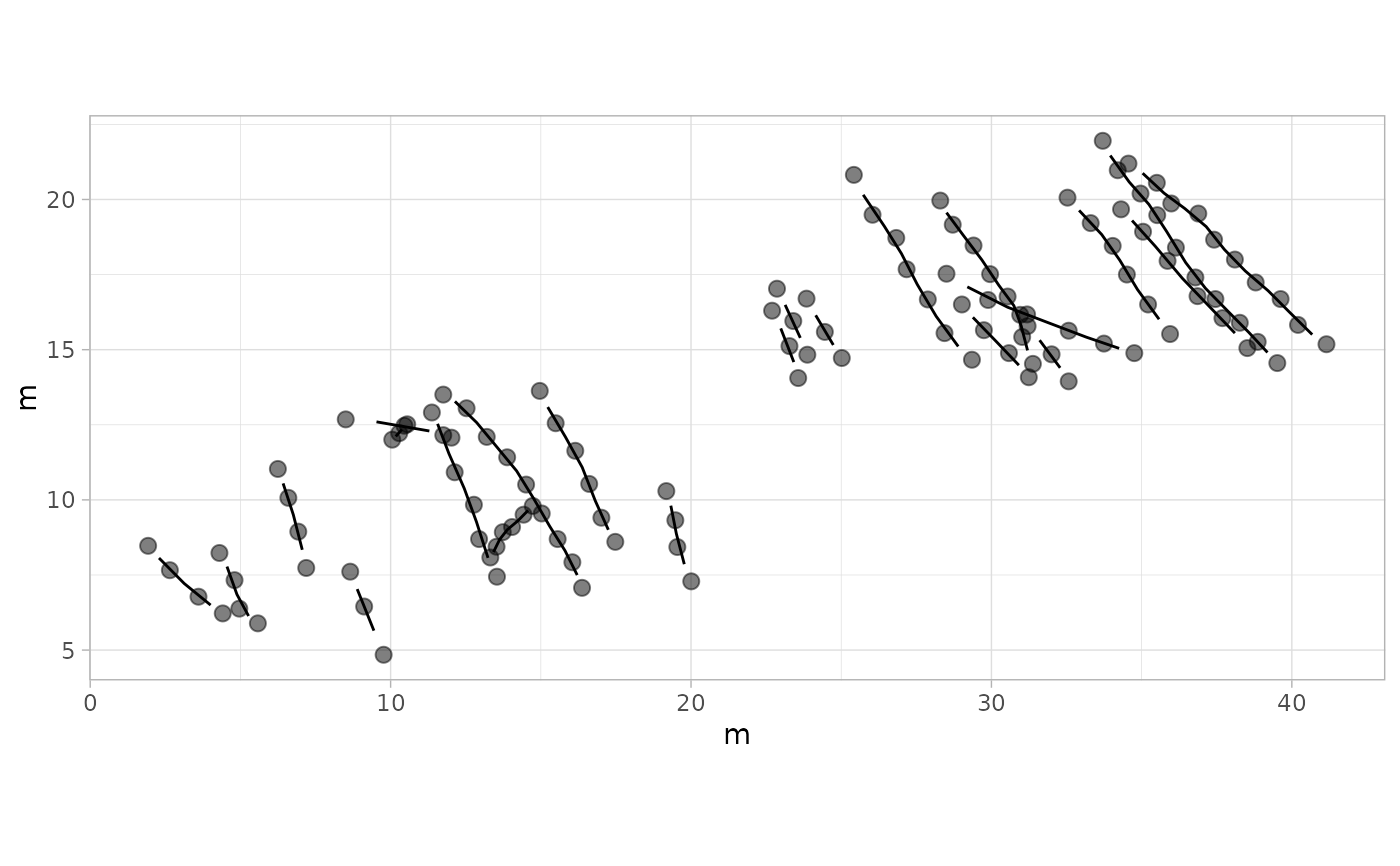 # Example 2: Basic Plot with Default Settings - PaluxyRiver Dataset
plot_track(PaluxyRiver)
# Example 2: Basic Plot with Default Settings - PaluxyRiver Dataset
plot_track(PaluxyRiver)
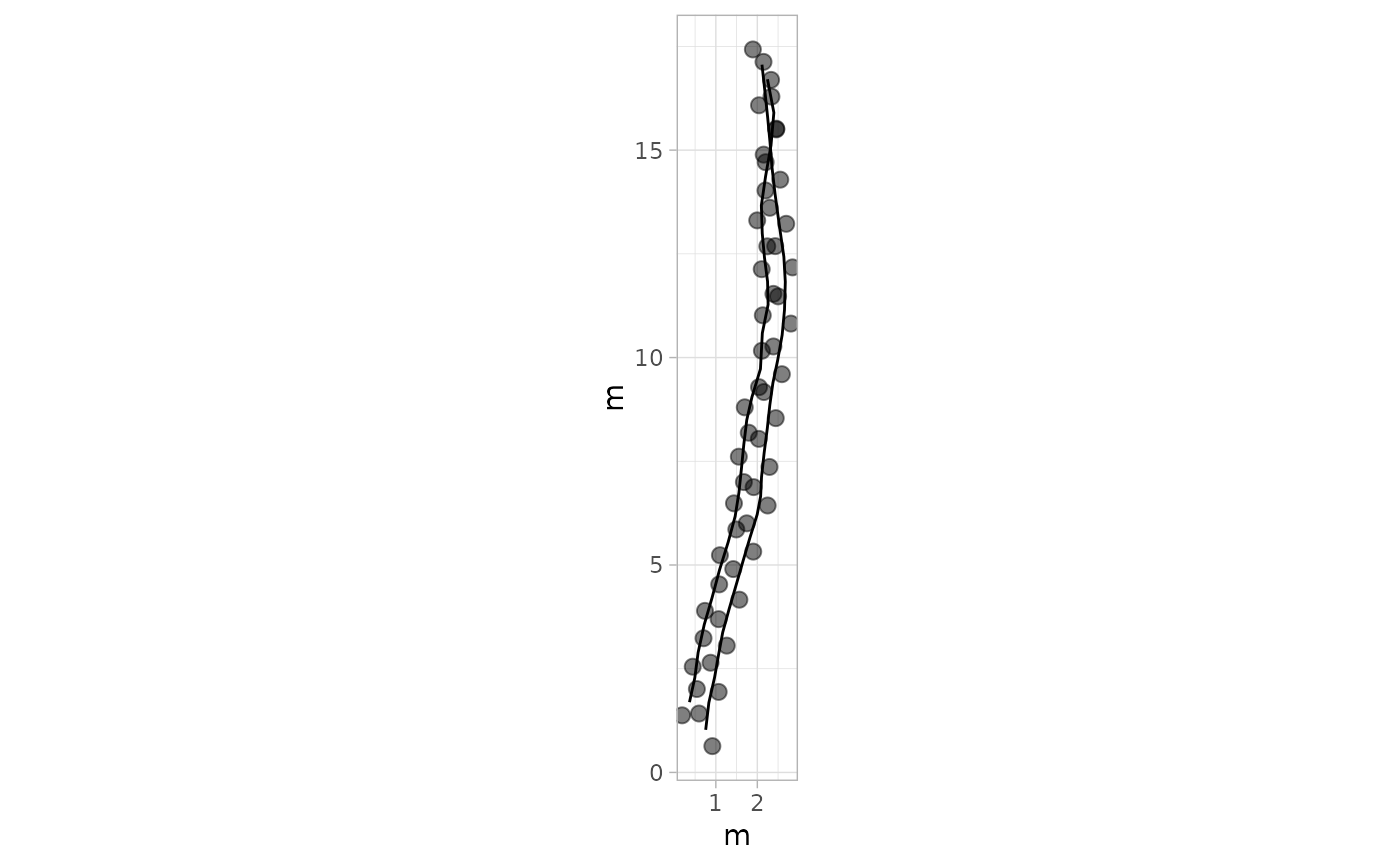 # Example 3: Plot Tracks Only - MountTom Dataset
plot_track(MountTom, plot = "Tracks")
# Example 3: Plot Tracks Only - MountTom Dataset
plot_track(MountTom, plot = "Tracks")
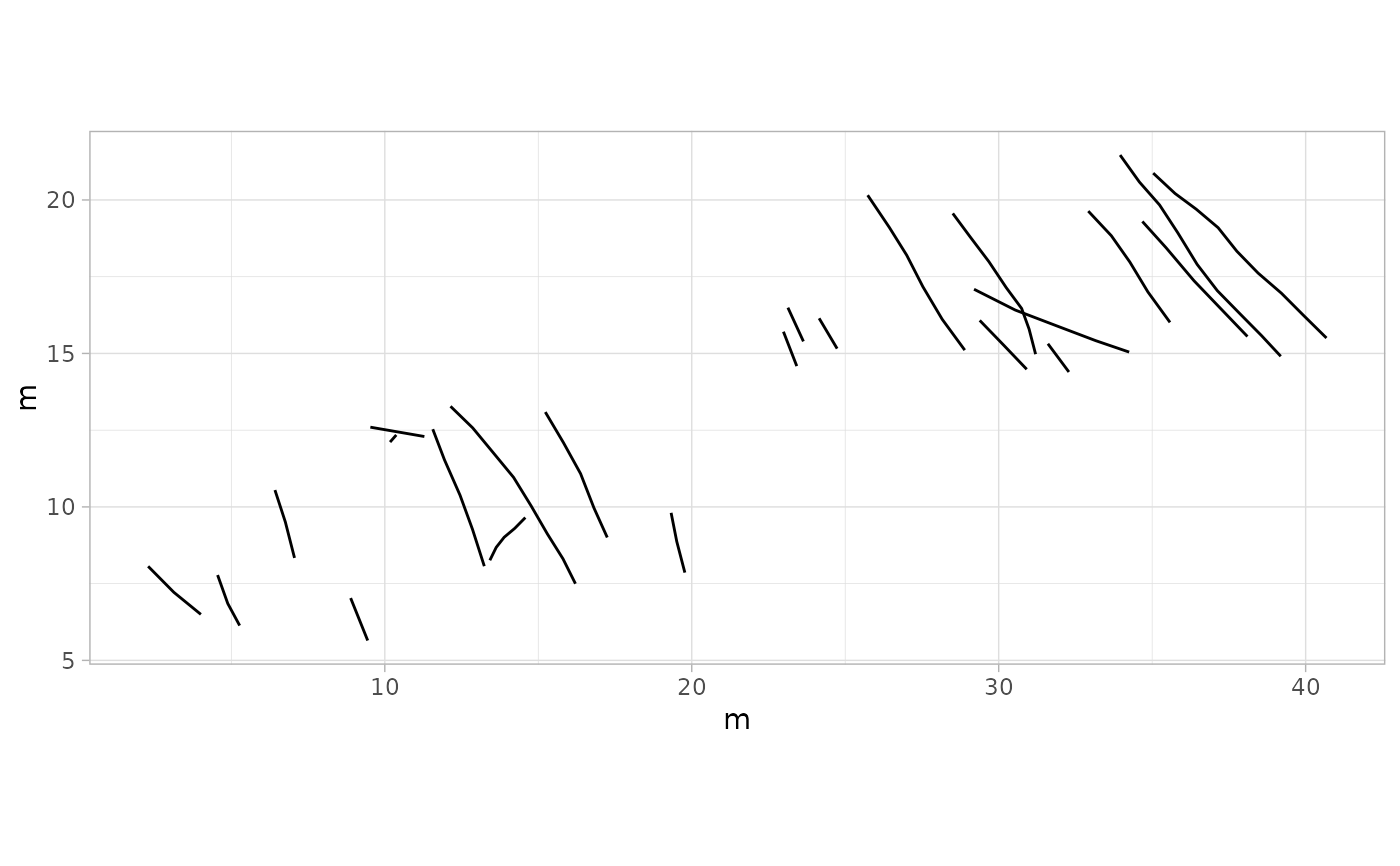 # Example 4: Plot Footprints Only - PaluxyRiver Dataset
plot_track(PaluxyRiver, plot = "Footprints")
# Example 4: Plot Footprints Only - PaluxyRiver Dataset
plot_track(PaluxyRiver, plot = "Footprints")
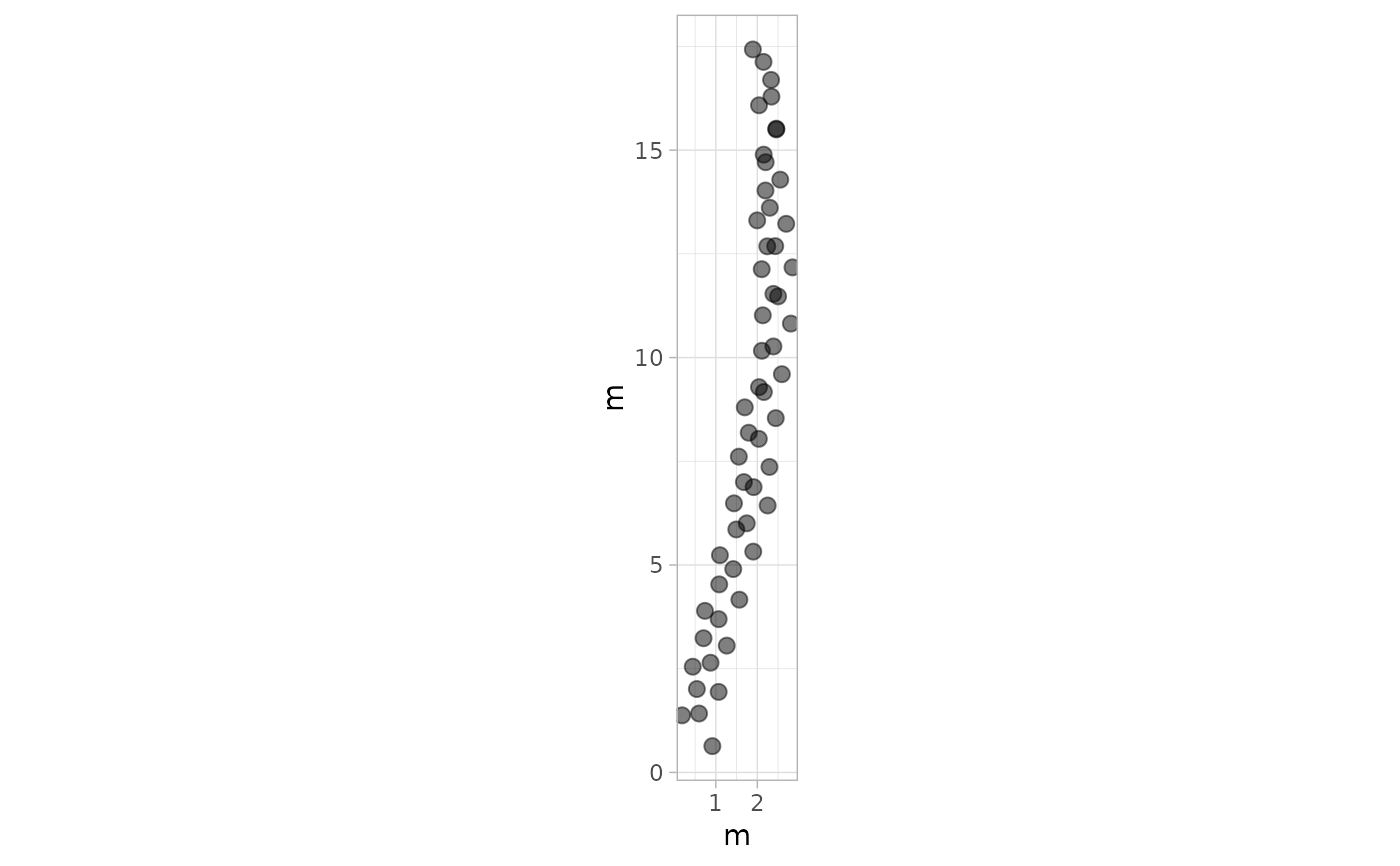 # Example 5: Custom Colors for Tracks - MountTom Dataset
custom_colors <- c(
"#008000", "#0000FF", "#FF0000", "#800080", "#FFA500", "#FFC0CB", "#FFFF00",
"#00FFFF", "#A52A2A", "#FF00FF", "#808080", "#000000", "#006400", "#00008B",
"#8B0000", "#FF8C00", "#008B8B", "#A9A9A9", "#000080", "#808000", "#800000",
"#008080", "#FFD700"
)
plot_track(MountTom, colours = custom_colors)
# Example 5: Custom Colors for Tracks - MountTom Dataset
custom_colors <- c(
"#008000", "#0000FF", "#FF0000", "#800080", "#FFA500", "#FFC0CB", "#FFFF00",
"#00FFFF", "#A52A2A", "#FF00FF", "#808080", "#000000", "#006400", "#00008B",
"#8B0000", "#FF8C00", "#008B8B", "#A9A9A9", "#000080", "#808000", "#800000",
"#008080", "#FFD700"
)
plot_track(MountTom, colours = custom_colors)
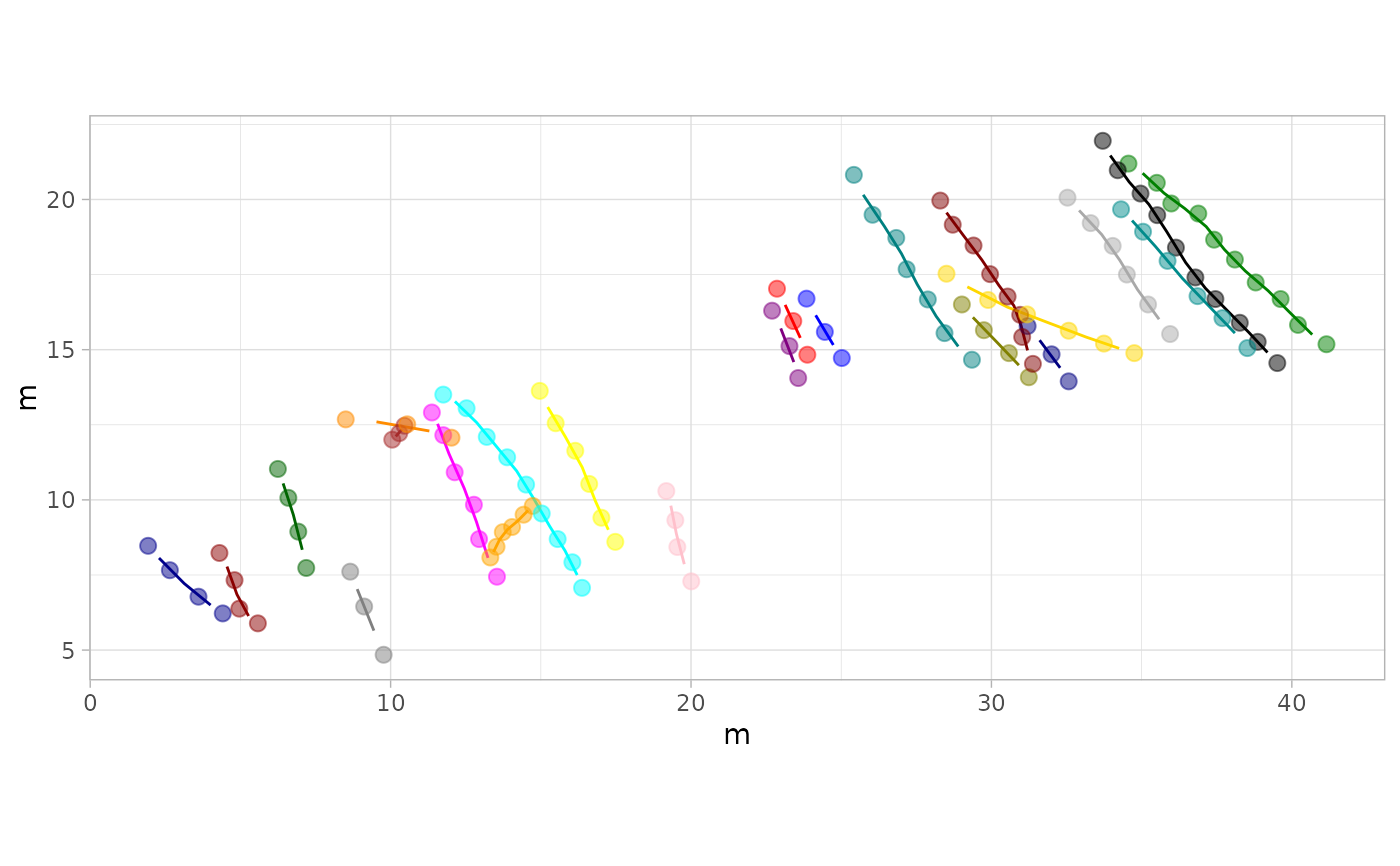 # Example 6: Larger Footprints and Track Lines - PaluxyRiver Dataset
plot_track(PaluxyRiver, cex.f = 5, cex.t = 2)
# Example 6: Larger Footprints and Track Lines - PaluxyRiver Dataset
plot_track(PaluxyRiver, cex.f = 5, cex.t = 2)
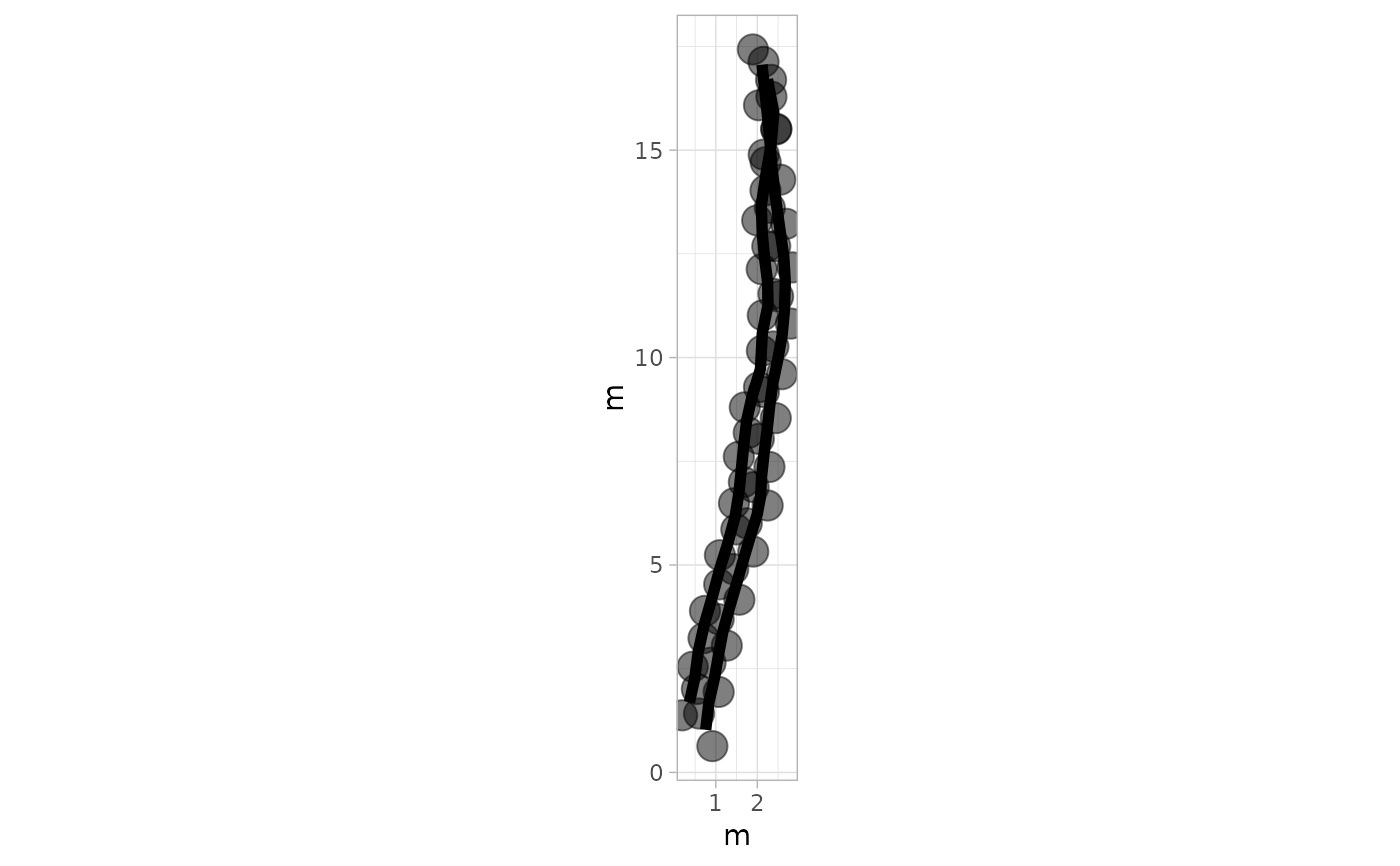 # Example 7: Semi-Transparent Footprints and Tracks - MountTom Dataset
plot_track(MountTom, alpha.f = 0.5, alpha.t = 0.5)
# Example 7: Semi-Transparent Footprints and Tracks - MountTom Dataset
plot_track(MountTom, alpha.f = 0.5, alpha.t = 0.5)
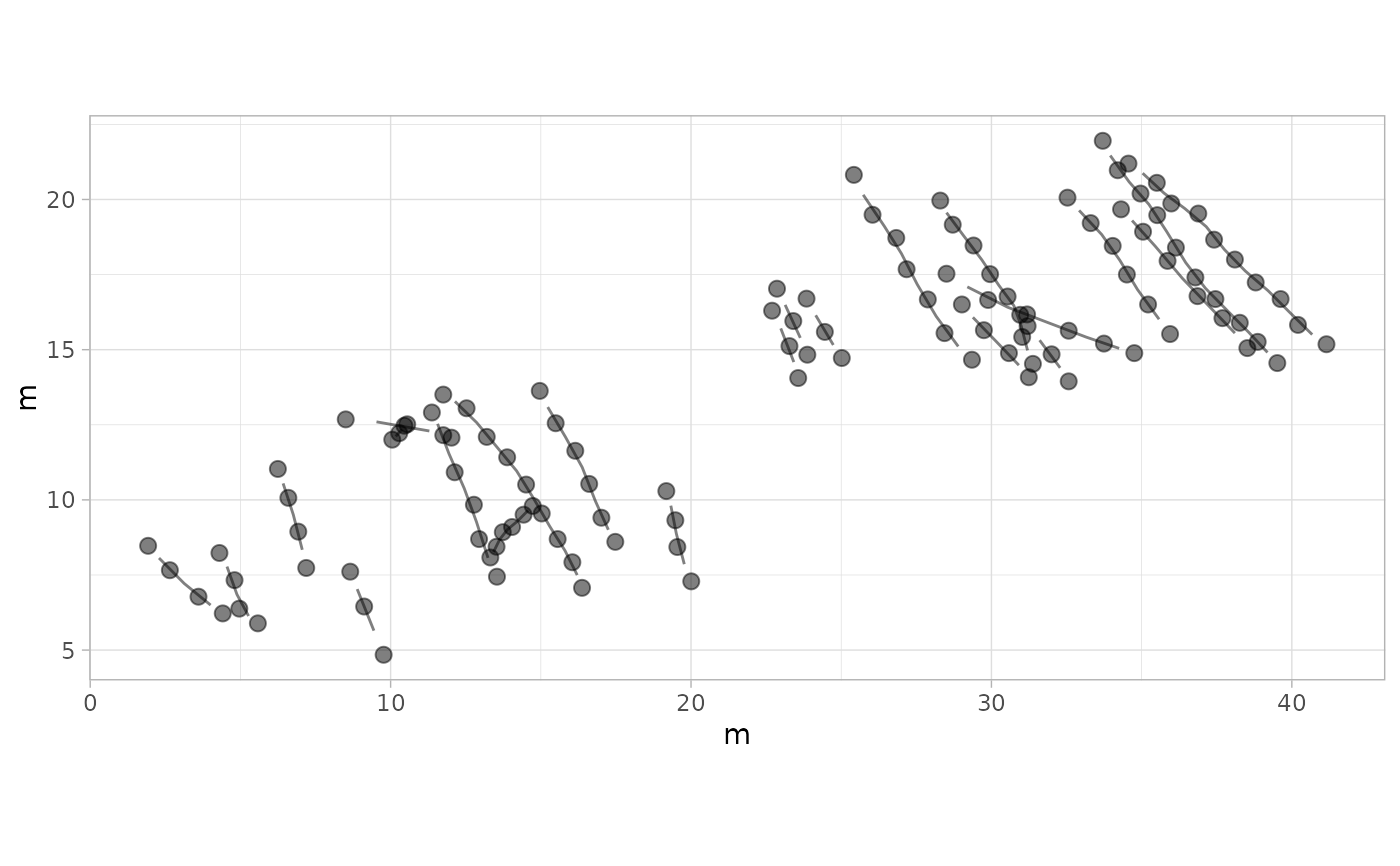 # Example 8: Different Shapes for Footprints - PaluxyRiver Dataset
plot_track(PaluxyRiver, shape.f = c(16, 17))
# Example 8: Different Shapes for Footprints - PaluxyRiver Dataset
plot_track(PaluxyRiver, shape.f = c(16, 17))
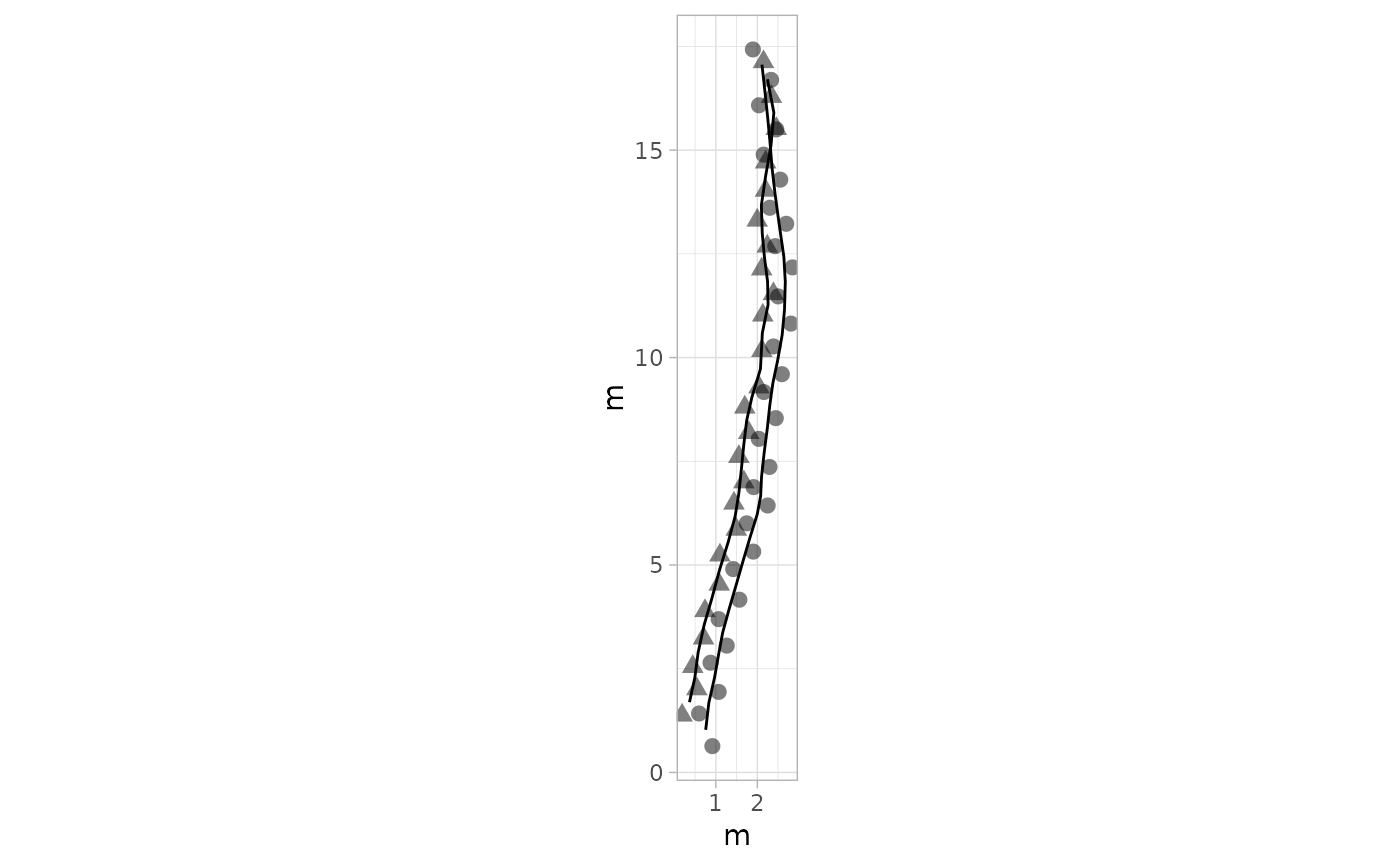 # Example 9: Plot with Labels for Tracks - MountTom Dataset
labels <- paste("Track", seq_along(MountTom[[1]]))
plot_track(MountTom, plot.labels = TRUE, labels = labels, cex.l = 4, box.p = 0.3, alpha.l = 0.7)
# Example 9: Plot with Labels for Tracks - MountTom Dataset
labels <- paste("Track", seq_along(MountTom[[1]]))
plot_track(MountTom, plot.labels = TRUE, labels = labels, cex.l = 4, box.p = 0.3, alpha.l = 0.7)
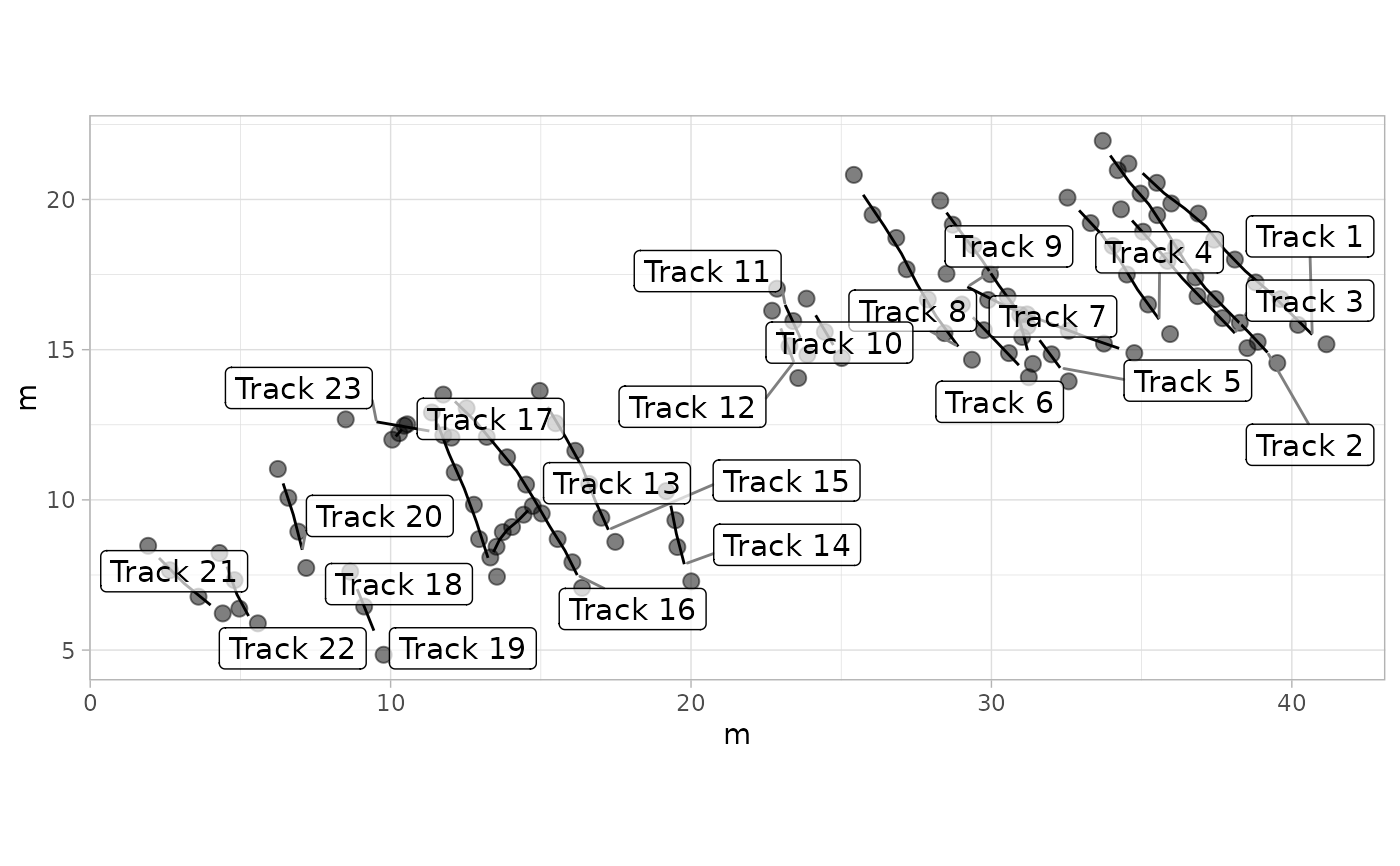 # Example 10: Custom Colors and Shapes for Footprints Only - PaluxyRiver Dataset
plot_track(PaluxyRiver, plot = "Footprints", colours = c("purple", "orange"), shape.f = c(15, 18))
# Example 10: Custom Colors and Shapes for Footprints Only - PaluxyRiver Dataset
plot_track(PaluxyRiver, plot = "Footprints", colours = c("purple", "orange"), shape.f = c(15, 18))
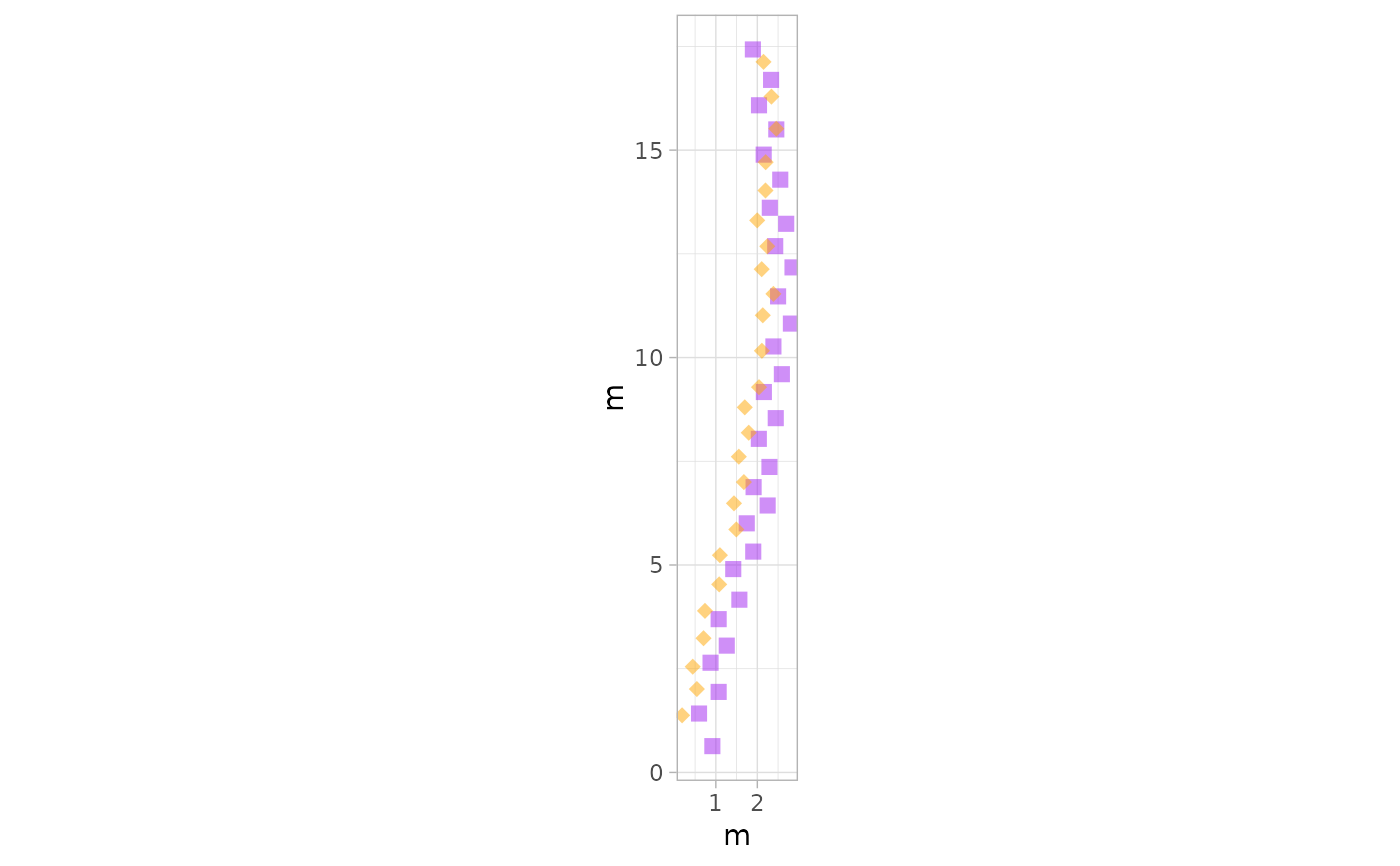 # Example 11: Larger Line Size & Custom Colors for Tracks Only - MountTom Dataset
plot_track(MountTom, plot = "Tracks", cex.t = 1.5, colours = custom_colors)
# Example 11: Larger Line Size & Custom Colors for Tracks Only - MountTom Dataset
plot_track(MountTom, plot = "Tracks", cex.t = 1.5, colours = custom_colors)
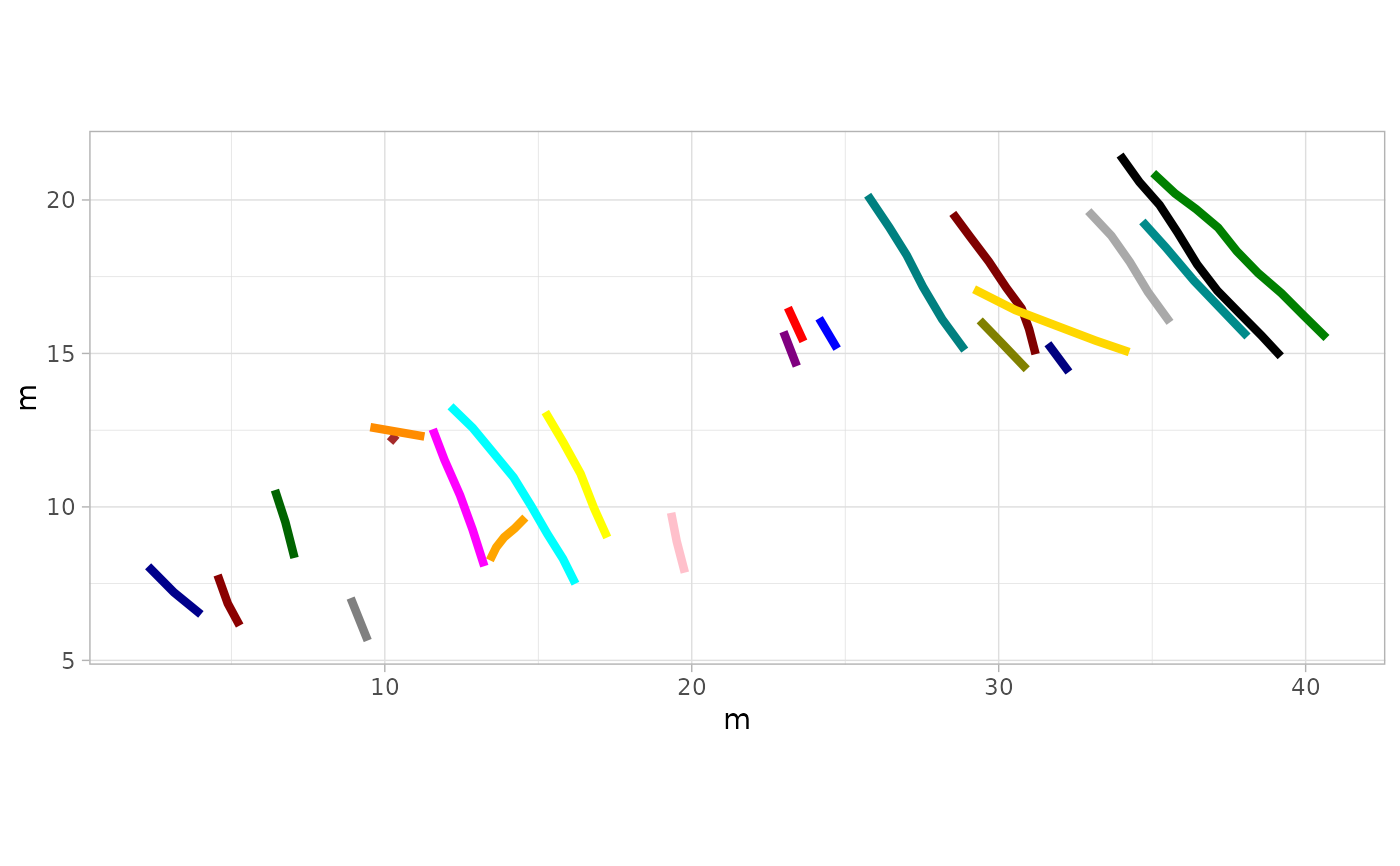 # Example 12: Black Footprints and Tracks with Labels - PaluxyRiver Dataset
plot_track(PaluxyRiver,
colours = NULL, shape.f = c(16, 16), plot.labels = TRUE,
labels = c("Saurpod", "Theropod"), cex.l = 2, alpha.l = 0.5
)
# Example 12: Black Footprints and Tracks with Labels - PaluxyRiver Dataset
plot_track(PaluxyRiver,
colours = NULL, shape.f = c(16, 16), plot.labels = TRUE,
labels = c("Saurpod", "Theropod"), cex.l = 2, alpha.l = 0.5
)
